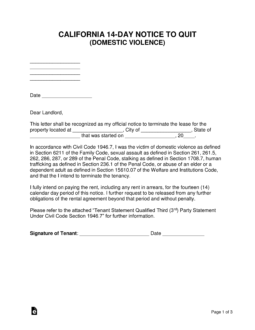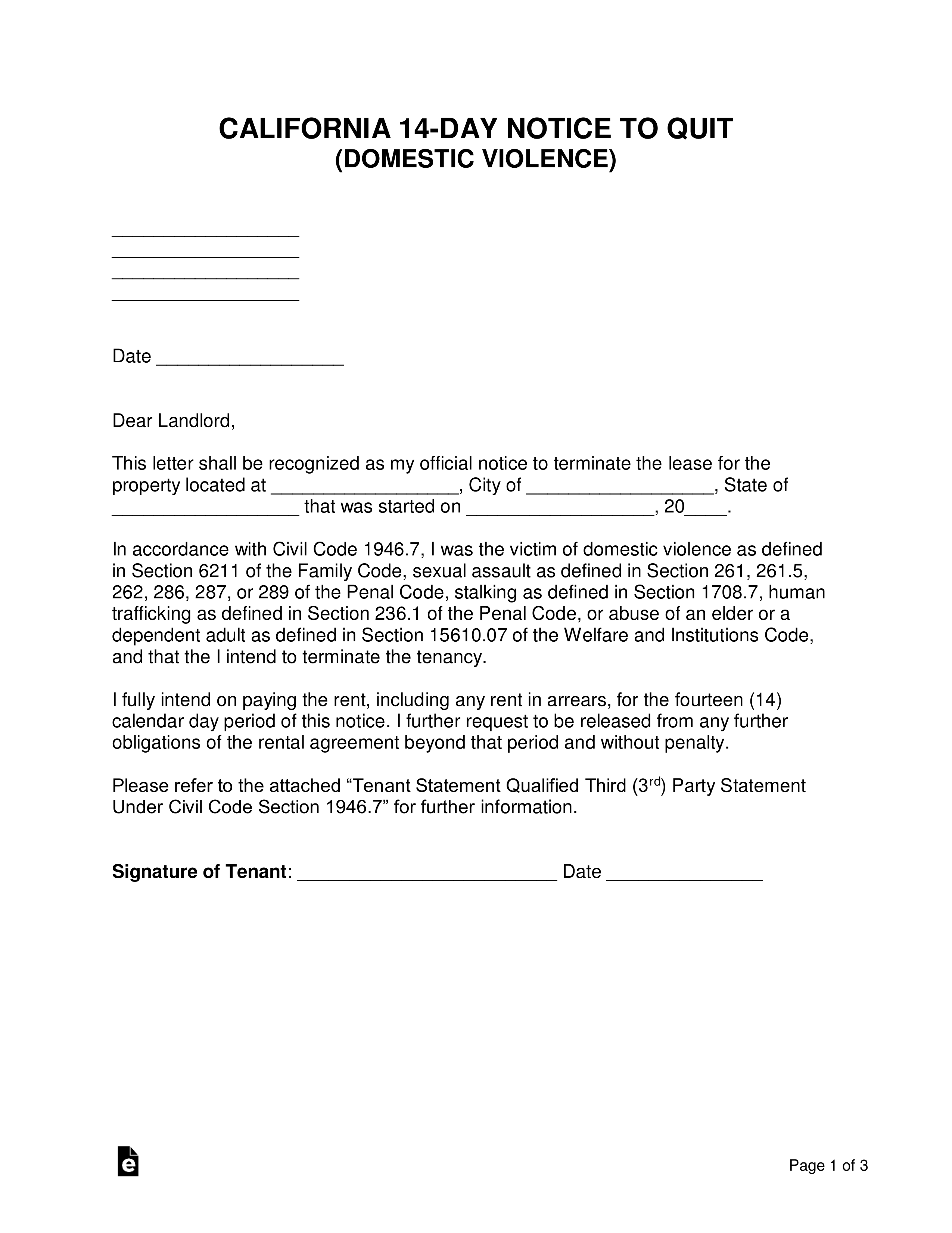Updated July 14, 2023
A California fourteen (14) day notice to quit is a letter that allows a tenant to terminate a lease agreement by claiming that they have been a victim of domestic violence or stalking. The tenant will remain responsible for any back-rent or rent that is due during the 14 calendar days that are given as the notice period to vacate the premises. The landlord will be obligated, under State law, to release the tenant from any further obligations under the lease beyond the notice period.
Laws – Civil Code 1946.7
Qualified Third (3rd) Party
The tenant will be obligated under the law to attach the “Tenant Statement Qualified Third (3rd) Party Statement Under Civil Code 1946.7” that requires the domestic violence incident(s) to be reported to one (1) of the following individuals:
- Sexual assault counselor;
- Domestic violence counselor;
- Human trafficking caseworker;
- Physician;
- Osteopathic physician;
- Registered nurse;
- Psychiatrist;
- Psychologist;
- Social worker;
- Marriage or family therapist; or
- Clinical Counselor.


